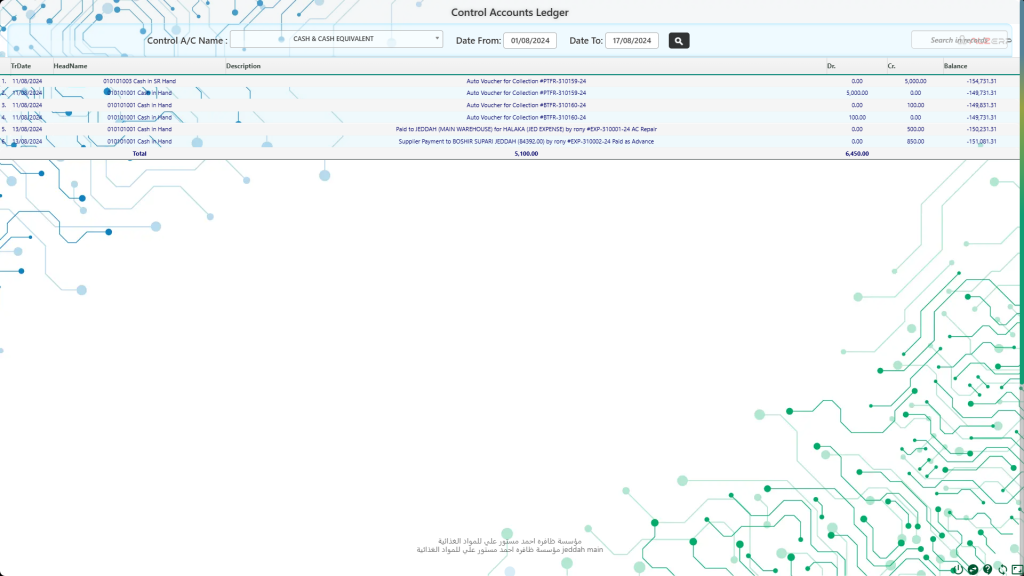ALZERP’s Control Accounts Ledger is a specialized report designed to provide a detailed analysis of financial transactions within a specific control account. It serves as a valuable tool for businesses to monitor account performance, identify trends, and make informed financial decisions.
How it Works #
To generate a Control Accounts Ledger report, users can specify the following parameters:
- Control Account: Select the desired control account for analysis.
- Date Range: Define the specific timeframe for the report.
- Output Format: Choose the preferred format (PDF, Excel, or Word).

ALZERP then processes the selected data and generates a comprehensive report.
Components of the Control Accounts Ledger Report #
The Control Accounts Ledger report typically includes:
- Date: The date of each transaction.
- Particulars: A detailed description of the transaction.
- Debit: The amount debited to the control account.
- Credit: The amount credited to the control account.
- Balance: The running balance of the control account.
- Opening Balance: The starting balance for the specified period.
- Closing Balance: The ending balance for the specified period.
Purpose and Benefits #
The Control Accounts Ledger offers several key benefits:
- In-depth Analysis: Provides a granular view of financial activity within a specific control account.
- Trend Identification: Helps identify patterns and trends in account transactions.
- Decision Support: Offers valuable data for informed financial decision-making.
- Reconciliation: Facilitates the reconciliation process by providing detailed transaction information.
Relationship to the General Ledger #
The Control Accounts Ledger is a subset of the general ledger. While the general ledger encompasses all financial accounts and transactions, the Control Accounts Ledger focuses on a specific control account, providing a more detailed analysis of its activity.
By utilizing ALZERP’s Control Accounts Ledger, businesses can gain deeper insights into their financial performance, identify areas for improvement, and make data-driven decisions.
Sign up for your free lifetime account of Cloud ERP Software and start transforming your business today!
– Create an account now –






